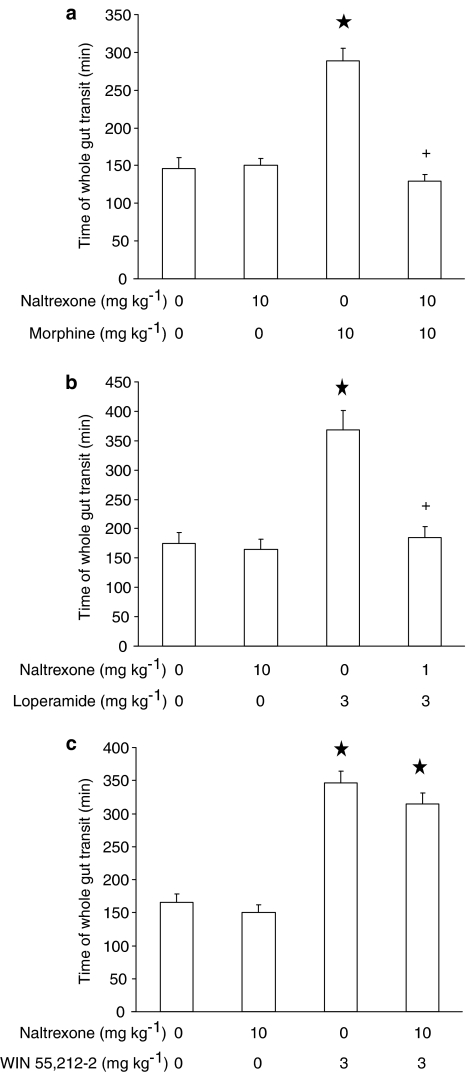Figure 4.
Effect of the acute, intraperitoneal administration of naltrexone on the increase in time of whole gut transit induced by the acute, intraperitoneal administration of morphine (a), loperamide (b), and WIN 55,212-2 (c) in CD1 mice. Time of whole gut transit indicated the time elapsing between the intragastric administration of the nonabsorbable coloured marker, carmine, and excretion of the first red fecal bolus. Each bar is the mean±s.e.m. of n=10 mice. *P<0.05 with respect to: 0 mg kg−1 naltrexone plus 0 mg kg−1 morphine-treated mice (Newman–Keuls test) in (a); 0 mg kg−1 naltrexone plus 0 mg kg−1 loperamide-treated mice (Newman–Keuls test) in (b); 0 mg kg−1 naltrexone plus 0 mg kg−1 WIN 55,212-2-treated mice (Newman–Keuls test) in (c). +: P<0.05 with respect to: 0 mg kg−1 naltrexone plus 10 mg kg−1 morphine-treated mice (Newman–Keuls test) in (a); 0 mg kg−1 naltrexone plus 3 mg kg−1 loperamide-treated mice (Newman–Keuls test) in (b).

